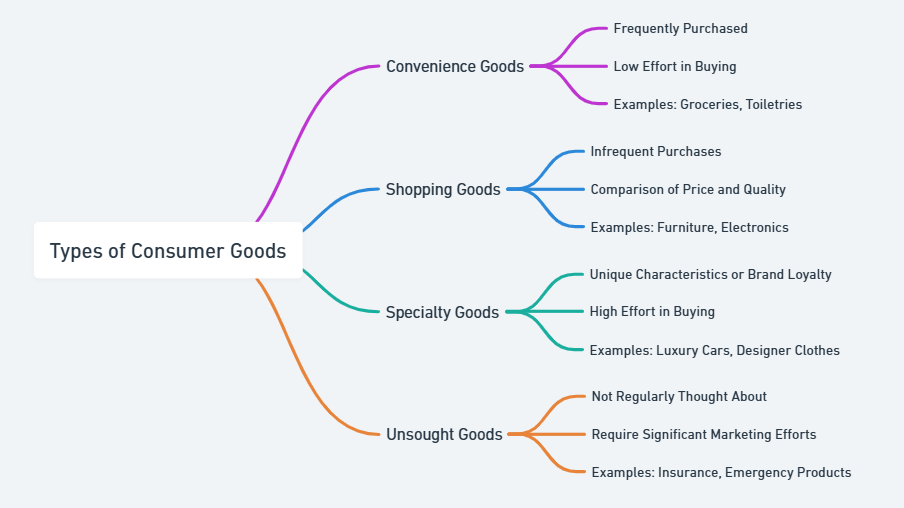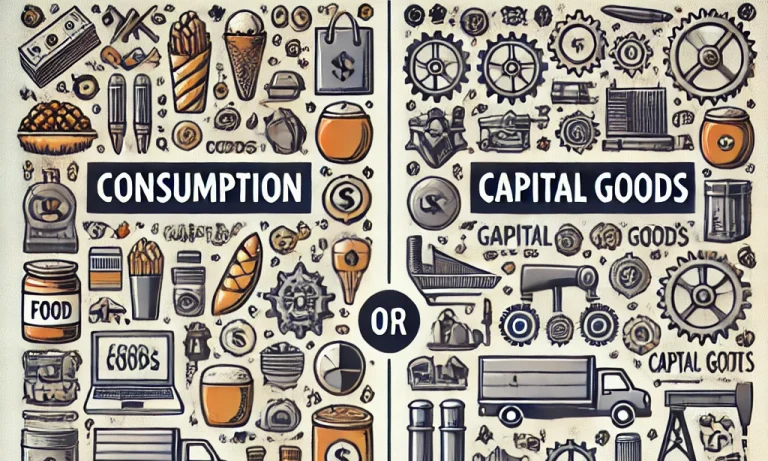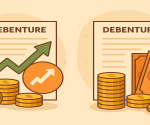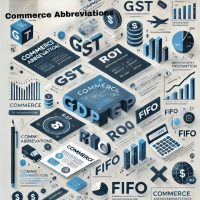Consumption goods and capital goods are the most commonly occurring terms in economics, categorized into different types of goods that people make available for use in the production, distribution, and consumption process. The former are used directly by the consumer to satisfy his needs or desires, while the latter are assets that are utilized to make other goods and services. A clear understanding of these goods is vital in analyzing consumer behavior, business investment strategies, and macroeconomic policies. These will be discussed in detail in this article to identify the differences between them, their characteristics, examples, and trade-offs.
Difference Between Consumption Goods and Capital Goods
The key difference lies between the end-use between consumption goods and capital goods. Consumption goods are directly used by consumers, whereas capital goods are used in the production of other goods and services to indirectly satisfy consumer needs.
Key Points of Difference
- Purpose: Consumer goods are directly consumed. Capital goods are used to produce goods and services.
- Longevity: Consumer goods have relatively short longevity, such as food items. Capital goods have a long life and are used over many years, such as machinery.
- Economic Role: Consumer goods are final goods. Capital goods are intermediate and are inputs to production.
| Feature | Consumption Goods | Capital Goods |
|---|---|---|
| Purpose | Direct consumption | Production of goods/services |
| Economic Role | Final goods | Intermediate goods |
| Longevity | Usually short-term | Long-term |
| Ownership | Consumers | Businesses |
| Examples | Food, clothing, electronics | Machinery, tools, factories |
| Depreciation | Not applicable | Applicable |
| Effect on Economy | Improves standard of living | Drives production and growth |
What Are Consumption Goods?
Consumption goods are those products or services that fulfill the urgent needs or wants of the consumer. It is mainly regarded as the end product of the production cycle and purchased by individuals or families for personal consumption.
Characteristics of Consumption Goods
- Direct Satisfaction: They provide immediate utility to consumers.
- Non-Productive Use: Unlike capital goods, they are not used to produce other goods or services.
- Market Orientation: Their demand is driven by consumer preferences and income levels.
Types of Consumer Goods
Consumer goods, also known as consumption goods, are grouped based on their durability, usage, purchasing habits, and consumer preference. This classification allows companies and economists alike, as well as policy-makers to analyze and understand trends in demand, market strategies, and the economy in general. Here is a detailed breakdown of consumer goods:
Durable Goods
Durable goods are products that can provide utility over a longer period of more than three years and are not used up in one go. They usually involve a major up-front cost of investment.
Examples: Furniture, appliances, vehicles.
Non-Durable Goods
Non-durables are products that have a one-time use or usage, usually consumed within a short period. Since they require frequent replenishment, they remain an integral part of living.
Examples: Groceries, cosmetics, and stationery.
Services
Services are intangible products offered for consumption at the point of production. Thus, services, unlike physical goods, cannot be stored nor owned but meet a need or desire in real-time.
Examples: Education, healthcare, entertainment.
Convenience Goods
Convenience goods are products that consumers purchase regularly, with minimal effort or decision-making involved. They are widely available and affordable.
Examples: Snacks, beverages, and toiletries.

Consumption Goods Examples
Consumption goods vary widely and touch almost every aspect of daily life:
- Food and Beverages: Rice, fruits, coffee.
- Clothing: Shirts, jeans, formal attire.
- Electronics: Mobile phones, laptops, gaming consoles.
- Personal Services: Fitness training, hairdressing, tourism.
Capital Goods Meaning
Capital goods are the physical assets used by the company or the manufacturers to produce the goods and services. Such physical assets may not be a finished good or for direct consumption but be used in enhancing production efficiency and capacity.
Characteristics of Capital Goods
- Intermediate Nature: They serve as tools for creating other goods or services.
- Investment Focused: Businesses invest in capital goods to improve productivity.
- Subject to Depreciation: Over time, their value decreases due to wear and tear.
Capital Goods Examples
Capital goods are critical for various industries and can include:
- Machinery: Equipment used in manufacturing plants.
- Tools: Instruments like hammers, drills, and saws.
- Buildings: Factories, warehouses, and offices.
- Infrastructure: Roads, bridges, and energy systems.
These goods enable economic growth by boosting production capacities.
Trade-off Between Capital and Consumption Goods
The choice of capital goods or consumption goods often conflicts in an economic system. It would be very important for the choice for deciding the course of development of a country.
- Capital Goods Focus: Generates long-term economic growth through the development of productive capacity. Example: Investment in infrastructure or technology for some future return.
- Consumption Goods Focus: Improves present living standards by the satisfaction of current consumer demands. Example: High production of food and consumer electronics.
Consumption Goods and Capital Goods FAQs
What is the difference between consumption goods and capital goods?
Consumption goods are directly used by consumers for personal satisfaction, whereas capital goods are assets used in producing other goods and services.
Can a single item be both a consumption and capital good?
Yes. For example, a car is a consumption good when purchased for personal use but becomes a capital good when used by a taxi service.
Why is the trade-off between capital and consumption goods important?
This trade-off determines whether resources are used for immediate satisfaction (consumption goods) or long-term production growth (capital goods).
What are common examples of consumption goods?
Examples include food, clothing, and electronic devices such as smartphones and laptops.
What are examples of capital goods?
Examples include factory machinery, tools, warehouses, and vehicles used for business operations.


